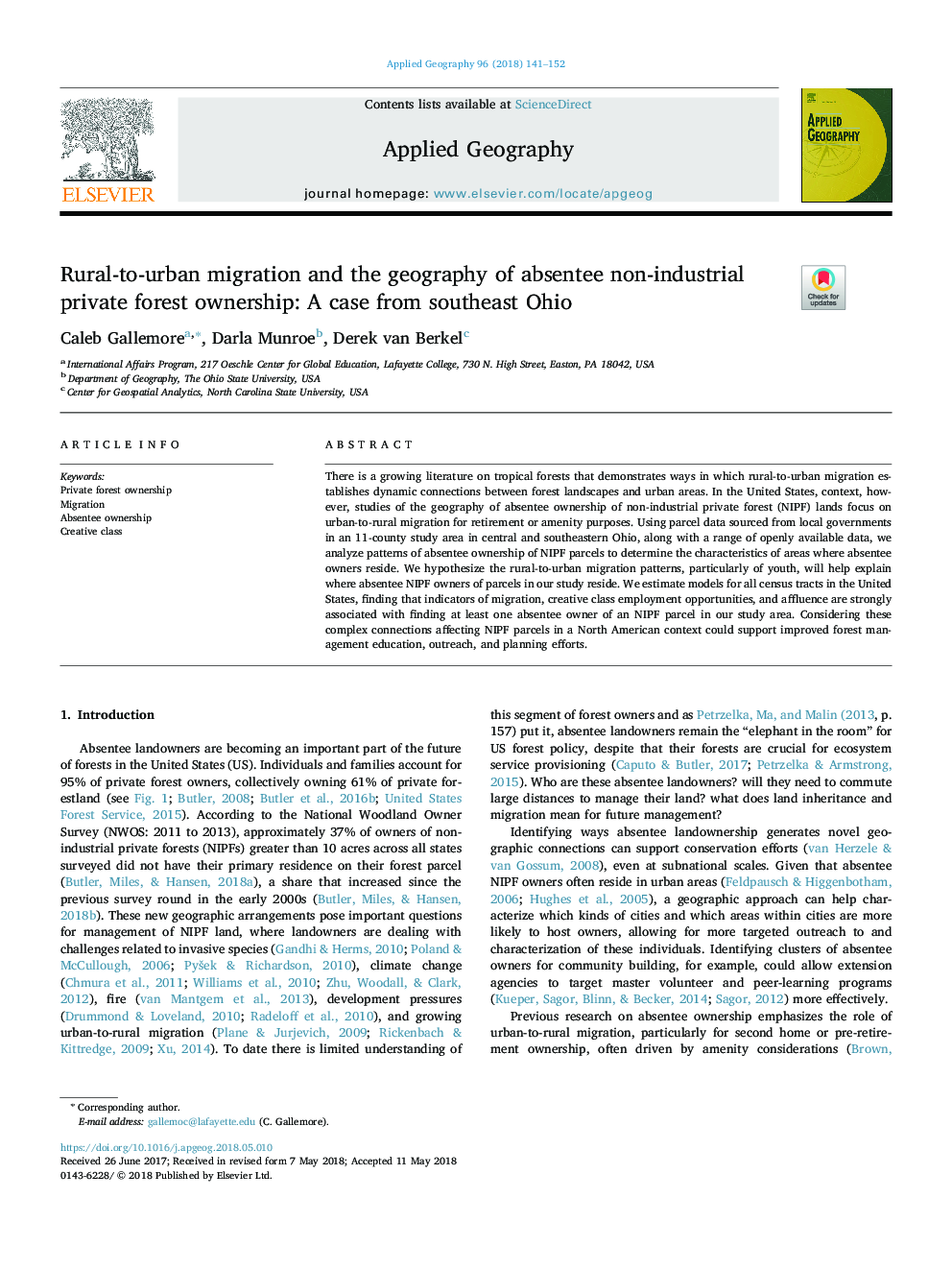| Article ID | Journal | Published Year | Pages | File Type |
|---|---|---|---|---|
| 6538256 | Applied Geography | 2018 | 12 Pages |
Abstract
There is a growing literature on tropical forests that demonstrates ways in which rural-to-urban migration establishes dynamic connections between forest landscapes and urban areas. In the United States, context, however, studies of the geography of absentee ownership of non-industrial private forest (NIPF) lands focus on urban-to-rural migration for retirement or amenity purposes. Using parcel data sourced from local governments in an 11-county study area in central and southeastern Ohio, along with a range of openly available data, we analyze patterns of absentee ownership of NIPF parcels to determine the characteristics of areas where absentee owners reside. We hypothesize the rural-to-urban migration patterns, particularly of youth, will help explain where absentee NIPF owners of parcels in our study reside. We estimate models for all census tracts in the United States, finding that indicators of migration, creative class employment opportunities, and affluence are strongly associated with finding at least one absentee owner of an NIPF parcel in our study area. Considering these complex connections affecting NIPF parcels in a North American context could support improved forest management education, outreach, and planning efforts.
Keywords
Related Topics
Life Sciences
Agricultural and Biological Sciences
Forestry
Authors
Caleb Gallemore, Darla Munroe, Derek van Berkel,
